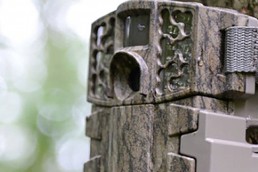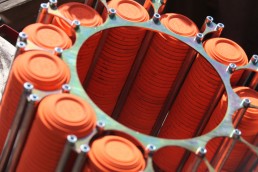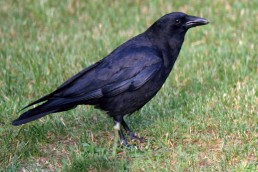Hunting with a Camera Extends the Season
SHARE THIS POST
Hunters have all summer to think about hunting and the next season. Whether you are a small-game hunter, a waterfowl hunter, a bowhunter or a rifle hunter, you are always thinking about the upcoming season.
I learned many years ago that I could hunt with a camera all year long. I bought a lot of film and paid a lot of processing fees. But now, digital cameras have become less expensive. With many people using smartphones for taking high-resolution photos, you can camera-hunt without even using a digital camera. Personally, I prefer a camera that is made for taking pictures that has the ability to use a variety of lenses.
I have a standard 35mm digital camera with an 18 to 55mm lens along with a 70 to 300mm lens. I also have a 600mm lens that I can only use with a tripod. I rarely use this, and when I do it is mostly around lakes where I may do some waterfowl hunting.
I also recommend carrying a handheld GPS unit when photo-hunting. While some high-end cameras have the ability to add the GPS reading right to the photo, I have a lower-priced camera and a GPS unit, which I can use for the photos and for actual hunting. I’ll also carry a small notebook and pen with me.
Sometimes I go out with the camera in an area where I usually hunt, and at other times I use it to scout new hunting areas. One of the first things I do is go out to my permanent treestand and my ground blind and take pictures both from the stands and from typical shooting lanes. I use these stands for both bowhunting and rifle hunting, so there are lanes of different lengths. Occasionally in the pictures from the stand I will see something that should not be there. It may be a branch hanging down or a new bush that has grown up that will be in my line of sight for the bow or even farther out in the way for the gun—you get so used to looking at these that you don’t notice them when you are in your stand. However, with a picture blown up on your computer screen you will be surprised what you may see as the pictures from the shooting lanes toward stands give you a deer’s-eye view. This is especially important for a ground blind that is at eye-level for the bucks. I have made several changes to both of my stands after looking at these pictures.
Now that your permanent blinds and stands are checked out it is time to take that camera into the woods. This is what I enjoy most; I love being out in the woods and finding new, interesting areas I can hunt come fall. Sometimes you may think that you know an area fairly well and then still go out and learn many new things about it. You may be walking along a stream looking for deer trails that come down for the water and all of a sudden you come across beavers working, building a brand new dam. You can also get some excellent pictures of waterfowl. If you hunt these birds and you know where the new beaver pond is, then you’ve found an ideal spot for hunting waterfowl, which is my favorite.
Are you enjoying this post?
You can be among the first to get the latest info on where to go, what to use and how to use it!
Now is when the GPS comes into play. You can write down the coordinates for the dam and when you are ready to go back the exact location will be there for you to go to. Also, when going out with a camera in summer you see a lot of non-game animals that either are not around or ones you just don’t pay attention to when hunting. And when checking areas for waterfowl, you may wind up seeing the cranes, herons, coots and the ducks and geese you were or are going to look for.
Once you start going out with a camera and GPS, you are going to find that you will spend a lot more time in the woods. This, as far as I am concerned, is a big plus. The more time spent here, the better you will get to know it and the better hunter you will become. I have a small portable blind that I occasionally take out and set up. I do this in areas where I feel that I may want to hunt. I will set it up along a deer trail or next to a beaver pond and spend a good portion of the day in it. Most of the time it is in the late afternoon to see what action there is or later at dusk. If I really think that it will be a spot for me, sometimes I will even get up and be there before daylight and set up to see what the action is later. This is another time when my GPS coordinates come in handy. And, it is much harder to find an exact spot in the dark than in the daylight.
There are other perks to being out in the woods with a camera in spring and summer. I have come across morels, blueberries, raspberries and even a wild apple tree while roaming, looking to use my equipment.
Cameras and a GPS are also convenient during the hunting season itself. You can take pictures of the game you get while it still looks fresh. This is one place where a largescreen smartphone can help. I do not use a smartphone, but I have a small pocket-sized digital camera. I record many things on my camera and put them on the computer for later use. And, as a writer, I also have my laptop in my car on any hunting or fishing trip I take.
So, if you want more time in the woods and want it to be productive, grab your camera and a GPS and head for the hunting grounds.
MWO
SHARE THIS POST
Did you enjoy this post?
You can be among the first to get the latest info on where to go, what to use and how to use it!



